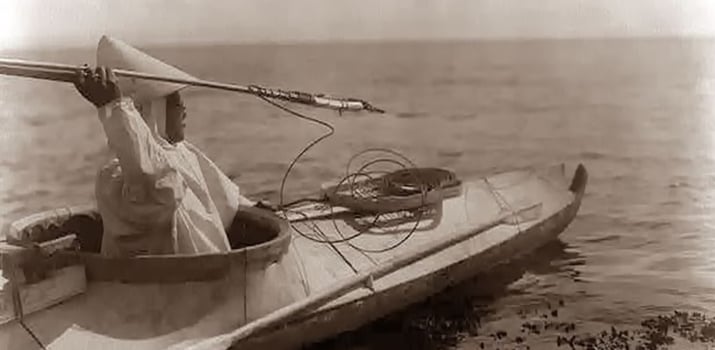The Inuit of Greenland - Just don't call them Eskimos!
Inuit comprise the majority of Greenland
Of Greenland's estimated total population of 58,000, 88% are Inuit. The balance of the population is mostly Danish. Although these indigenous people are collectively known as Inuit, most of these Greenlanders are broken down in to three sub-groups: Inughuit, Tunumiit, and Kalaallit. Each has their own language or dialect, but for practical reasons most are bilingual, speaking both Danish and Kalaallisut.
Don’t call the Inuit Eskimos!
While some of us grew up calling indigenous peoples of the north "Eskimos," this is not the preferred name of Greenlandic Inuit and is generally considered a pejorative. To be fair, the term "Eskimo" derives from the word "ayas̆kimew" and simply means "one who laces snowshoes," and so doesn't have any originating negative connotation. Nevertheless, these native inhabitants now refer to themselves as Inuit or simply Greenlanders. It should also be noted that the term Inuit refers to the entire group, as opposed to “Inuits.” Singularly, a person would be termed Inuk.
Igloos are not what you think they are
What we believe are igloos is not exactly true. Although there are some Inuit who occasionally live or have lived in the snow or ice domes we've seen in pictures, a more accurate meaning of the word igloo includes nearly any type of structure, which would include traditional tents, sod houses, homes constructed of driftwood and even modern buildings.
The Inuit diet is extremely healthy
As the world gets smaller and increasingly connected, the Greenlandic Inuit have been exposed to new and quite foreign types of food. Surprisingly, this has not dramatically transformed their traditional diet, as it has with other indigenous cultures. According to anthropologists, the Inuit diet has stayed pretty much the same throughout the centuries, consisting primarily of meat and fish. Let's face it: it's a challenge to grow and harvest vegetables and fruits within the Arctic climate. While one is tempted to think that a diet high in protein and fat would cause health issues, the Inuit have extremely low rates of heart disease, cancer and other diseases. In our modern culture, one has heard of the popularity of Paleolithic and Ketogenic diets. Some of the studies of the health benefits of these diets come directly from the Inuit way of life.
Have you ever wondered where the kayak comes from?
In a land where 80% of the country is snow, ice or icy waters, the creation of effective forms of transportation became paramount. Some of the early Inuit were responsible for creating qamutiks, or dogsleds, as well as qajaqs, which evolved to become the modern-day kayak. Larger groups of Inuit were transported across the water via umiaqs, which can be described as a 30-foot boat made with a driftwood or whalebone frame and held together with antlers or ivory. The skin covering was designed from stretched walrus or seal skin. Early dogsleds were constructed from the same materials the Inuit used for both qajaqs (kayaks) and umiaqs.
